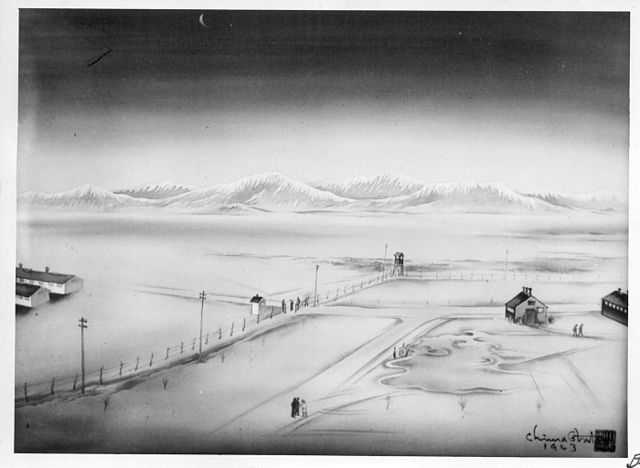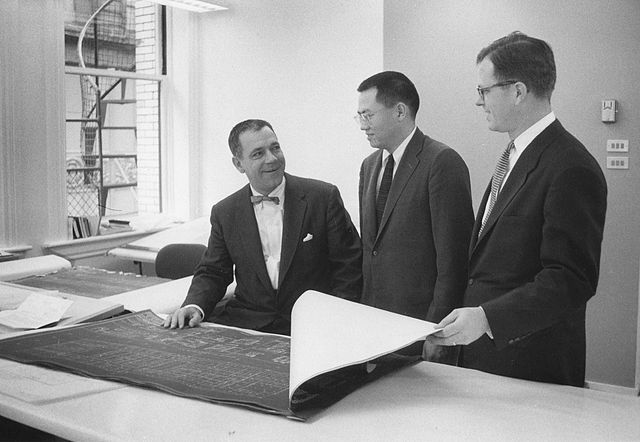Chiura Obata was a well-known Japanese-American artist and popular art teacher. A self-described "roughneck", Obata went to the United States in 1903, at age 17. After initially working as an illustrator and commercial decorator, he had a successful career as a painter, following a 1927 summer spent in the Sierra Nevada, and was a faculty member in the Art Department at the University of California, Berkeley, from 1932 to 1954, interrupted by World War II, when he spent a year in an internment camp. He nevertheless emerged as a leading figure in the Northern California art scene and as an influential educator, teaching at the University of California, Berkeley, for nearly twenty years and acting as founding director of the art school at the Topaz internment camp. After his retirement, he continued to paint and to lead group tours to Japan to see gardens and art.
Professor Chiura Obata painting in 1944
Professor Obata and family in 1944; (L–R):Gyo, Lily, Haruko, Prof. Obata.
Obata's New Moon, painted at Topaz and exhibited in Cambridge, Massachusetts in 1943.
George Hellmuth, Gyo Obata and George Kassabaum in the Welek Fabrics Building on 315 N. 10th St. in St. Louis (1956).
Topaz War Relocation Center
The Topaz War Relocation Center, also known as the Central Utah Relocation Center (Topaz) and briefly as the Abraham Relocation Center, was an American concentration camp in which Americans of Japanese descent and immigrants who had come to the United States from Japan, called Nikkei were incarcerated. President Franklin Roosevelt signed Executive Order 9066 in February 1942, ordering people of Japanese ancestry to be incarcerated in what were euphemistically called "relocation centers" like Topaz during World War II. Most of the people incarcerated at Topaz came from the Tanforan Assembly Center and previously lived in the San Francisco Bay Area. The camp was opened in September 1942 and closed in October 1945.
Hog farm where internees raised pork for the camp's kitchen
Internees clear land for agricultural use.
James Hatsuaki Wakasa and his dog in an undated photograph. A 63-year-old chef from San Francisco, Wakasa was shot and killed by a military sentry while walking his dog inside the barbed-wire fence.
The remains of the camp as seen from 20,000 feet in 2009








